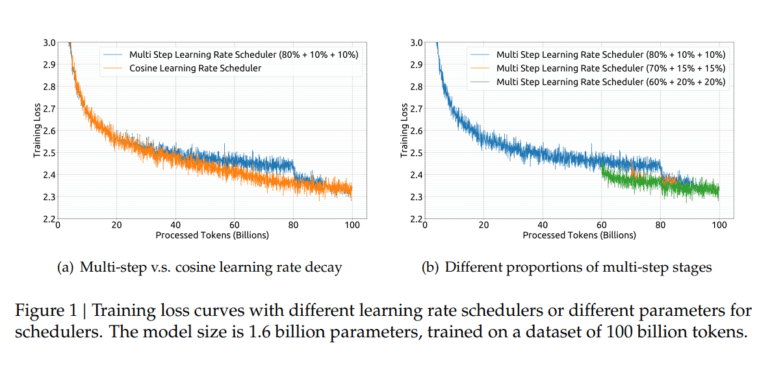TL;DR:
- DeepSeek AI introduces Open-Source AI Models: Trained from Scratch on 2 Trillion Tokens.
- Large Language Models (LLMs) are continuously evolving in AI with self-supervised pre-training.
- Scaling challenges in open-source LLMs addressed in DeepSeek AI’s research.
- Detailed study on scaling laws, focusing on 7B and 67B configurations.
- DeepSeek LLM Project aims to advance open-source language models with scaling principles.
- A vast dataset of 2 trillion tokens supports the pre-training stage, adapting to evolving needs.
- DeepSeek LLM Base models employ Direct Preference Optimization (DPO) and Supervised Fine-Tuning (SFT).
- DeepSeek LLM 67B, a 67-billion-parameter model, excels in math, reasoning, coding, and language comprehension.
- DeepSeek LLM 67B Chat performs exceptionally in math and coding, showcasing impressive generalization abilities.
- Outperforms GPT-3.5 in open-ended assessments, promising excellence in diverse contexts.
Main AI News:
The landscape of Artificial Intelligence (AI) is evolving at an unprecedented pace, with Large Language Models (LLMs) constantly pushing the boundaries of what’s possible in AI research. These LLMs undergo rigorous self-supervised pre-training on vast datasets, equipping them with the prowess to excel in a wide array of tasks, spanning question answering, content generation, text summarization, code completion, and beyond.
Amidst this dynamic AI environment, the development of open-source Large Language Models is surging ahead. Yet, as progress races forward, a cloud of uncertainty looms over the effective scaling of LLMs, owing to inconclusive findings from existing studies on scaling laws.
In response to this challenge, DeepSeek AI’s team of dedicated researchers has embarked on a quest to demystify the intricacies of scaling laws. They’ve unveiled an extensive study that delves into the nuances of scaling dynamics, with a particular focus on the immensely popular open-source configurations of 7 billion and 67 billion parameters.
Introducing the DeepSeek LLM Project, an ambitious and long-term initiative designed to propel the advancement of open-source language models, guided by well-established scaling principles. To fortify the pre-training stage, the team has meticulously curated an extensive dataset comprising a staggering 2 trillion tokens, a resource that continually evolves to meet the evolving demands of the AI landscape.
The development journey of DeepSeek LLM Base models has been marked by the judicious application of Direct Preference Optimization (DPO) and Supervised Fine-Tuning (SFT). These techniques have given rise to the emergence of highly sophisticated DeepSeek Chat models.
At its core, DeepSeek LLM stands as a paragon of sophistication, boasting a colossal 67 billion parameters. It has been meticulously trained from the ground up, drawing upon an extensive corpus of two trillion tokens in both Chinese and English. In rigorous evaluations, DeepSeek LLM 67B has demonstrated its exceptional efficacy, surpassing even the esteemed Llama2 70B Base model in areas such as mathematics, reasoning, coding, and Chinese language comprehension.
The prowess of DeepSeek LLM 67B Chat extends far and wide, delivering remarkable performance in domains like mathematics (GSM8K 0-shot: 84.1, Math 0-shot: 32.6) and coding (HumanEval Pass@1: 73.78). Impressively, it boasts a score of 65 on the Hungarian National High School Exam, attesting to its remarkable generalization capabilities and its ability to excel across a diverse array of tasks and contexts. In head-to-head comparisons with GPT-3.5, DeepSeek LLM 67B Chat has consistently outperformed, signaling a new era of excellence in open-ended assessments.
Conclusion:
DeepSeek LLMs represent a significant leap in the world of open-source AI models. With their groundbreaking scale and performance, they are poised to revolutionize the market by offering superior capabilities in a wide range of applications, from natural language understanding to problem-solving and content generation. Businesses and industries can harness the power of these models to gain a competitive edge and drive innovation.

